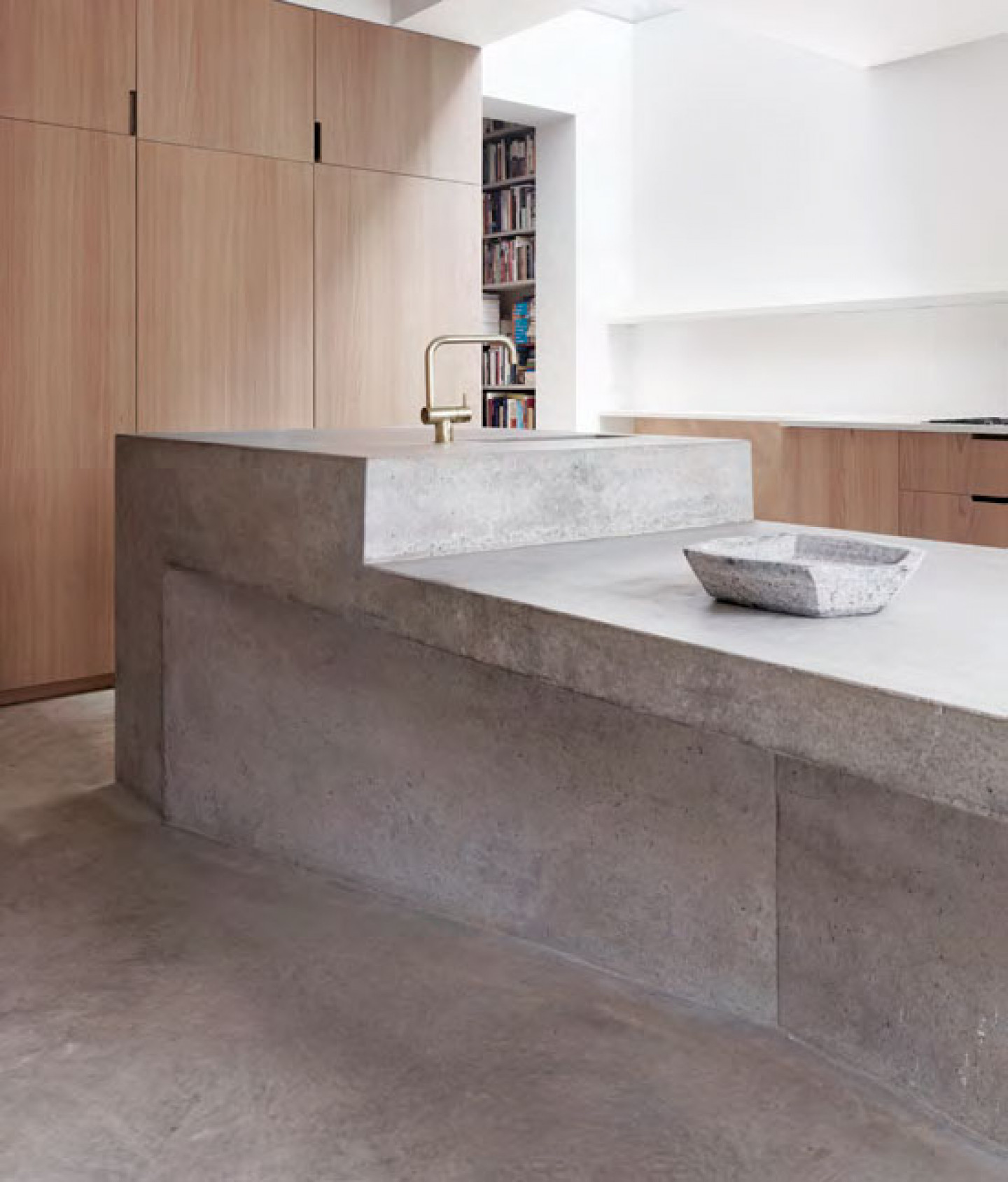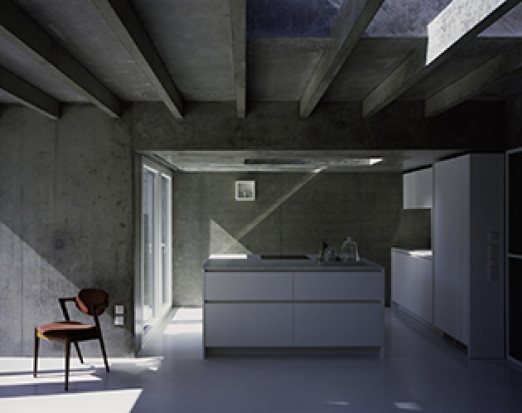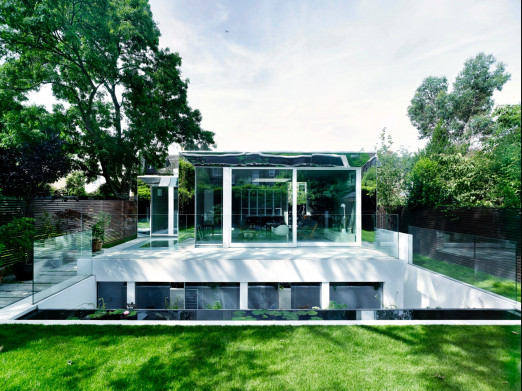This residential extension to a family home is almost entirely made from exposed cast in-situ concrete, including walls, floors and furniture. The centrepiece kitchen island cantilevers off a slender spine and is meticulously detailed to be created in just a single concrete pour. These concrete surfaces are complimented by joinery in grey elm and outside by the rusty texture of Corten steel cladding.
“It started off with the floor, then progressed to the window seat and columns, and finally the dining table and kitchen island. As we approached each element of the design from a material point of view, concrete always seemed to be the winner.”
Luke McLaren is describing the extension to a terraced house in Shepherd’s Bush, which his practice designed for a young family. It is a warm, inviting 3m-high space that combines a kitchen, dining area and space to relax or play. And it is made almost entirely from exposed concrete. “It all started with the client,” explains McLaren. “They liked concrete from a purely aesthetic point of view, and, as they have two young children, they wanted a main living space that would be robust over the years to come.”
 (The kitchen island was cast in a single pour. Photos: Richard Leeney)
(The kitchen island was cast in a single pour. Photos: Richard Leeney)
The furniture is certainly robust – the centrepiece kitchen island is a mighty structure, packed with rebar to support the tabletop, which cantilevers off a 100mm-wide spine leg. But it is also beautiful, with the fluidity of an object created in a single pour. McLaren describes the formwork as having “the precision of joinery”. The architects specified a spruce-based plywood that they knew gave a consistent, matt finish, and from this the contractor, Miles Builders, created the intricate reverse image of the island, with its many cutaways and overhangs. “The formwork had to be absolute perfect, because with furniture it’s things that you sit on, touch, work on – you’ll notice every mistake.”
If meticulous detail was key to the project, McLaren also concedes that, with in-situ concrete, there’s always an element you can’t control. In this case, that element was a large concrete-clad supporting column. “The column was supporting two storeys above, so once the steelwork was in, there was no gap to pour the concrete.” The solution was to make a small letterbox opening at the top of the formwork and pour it from the only side they could access. However, this resulted in a patinated finish on the reverse side: “When we struck the formwork, we all thought, oh God. But as the concrete dried and became lighter and lighter, and the project around it started to finish, it became increasingly appealing – the slightly rough appearance of this column compared to the pristine surfaces everywhere else. It actually became a real asset, and the client was really keen to keep it.”

(The main supporting column has a patinated finish on one side; Joinery in grey elm complements the concrete surfaces. Photos: Richard Leeney)
The concrete surfaces are complemented by joinery in grey elm, which has a dusty quality, and the garden shrubs, which press up against the glazed back wall. It is all perfectly controlled – it just needs a couple of children to add a touch of chaos.
PROJECT TEAM
Architect: McLaren Excell
Main contractor: Miles Builders
Source: Concrete Quarterly, Winter 2015


